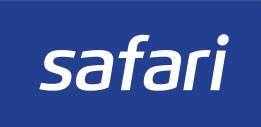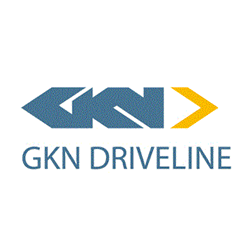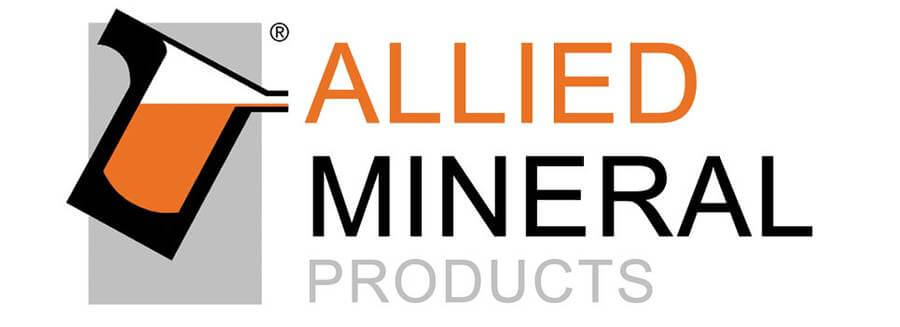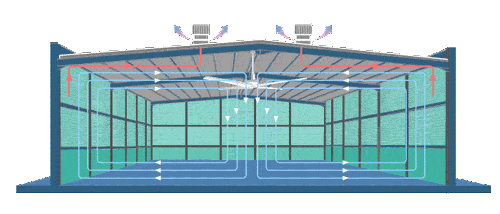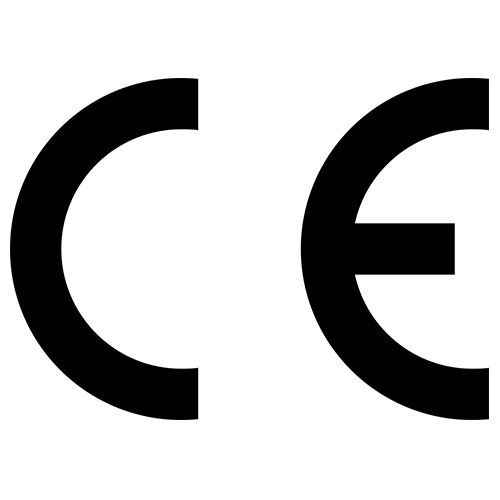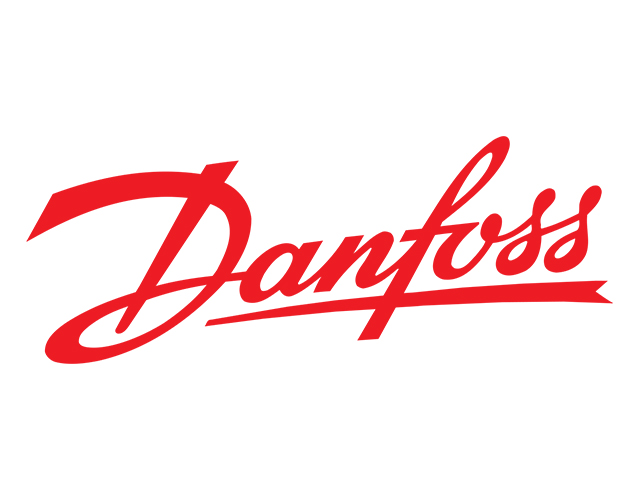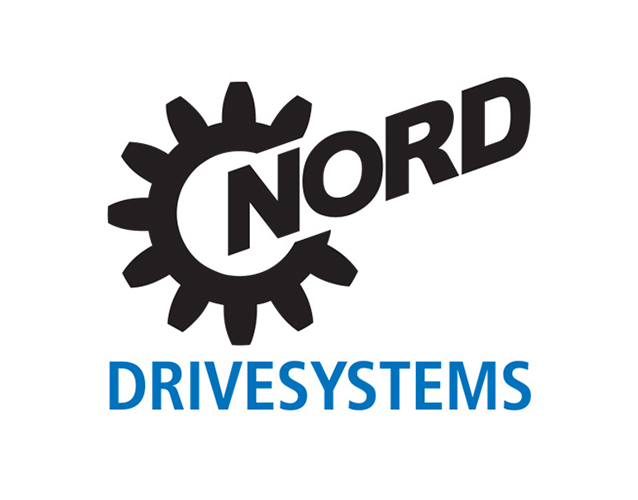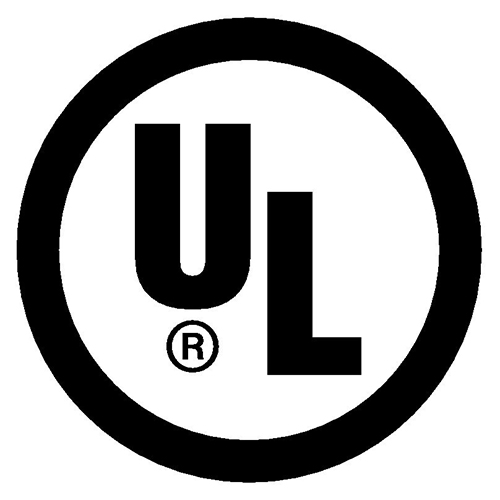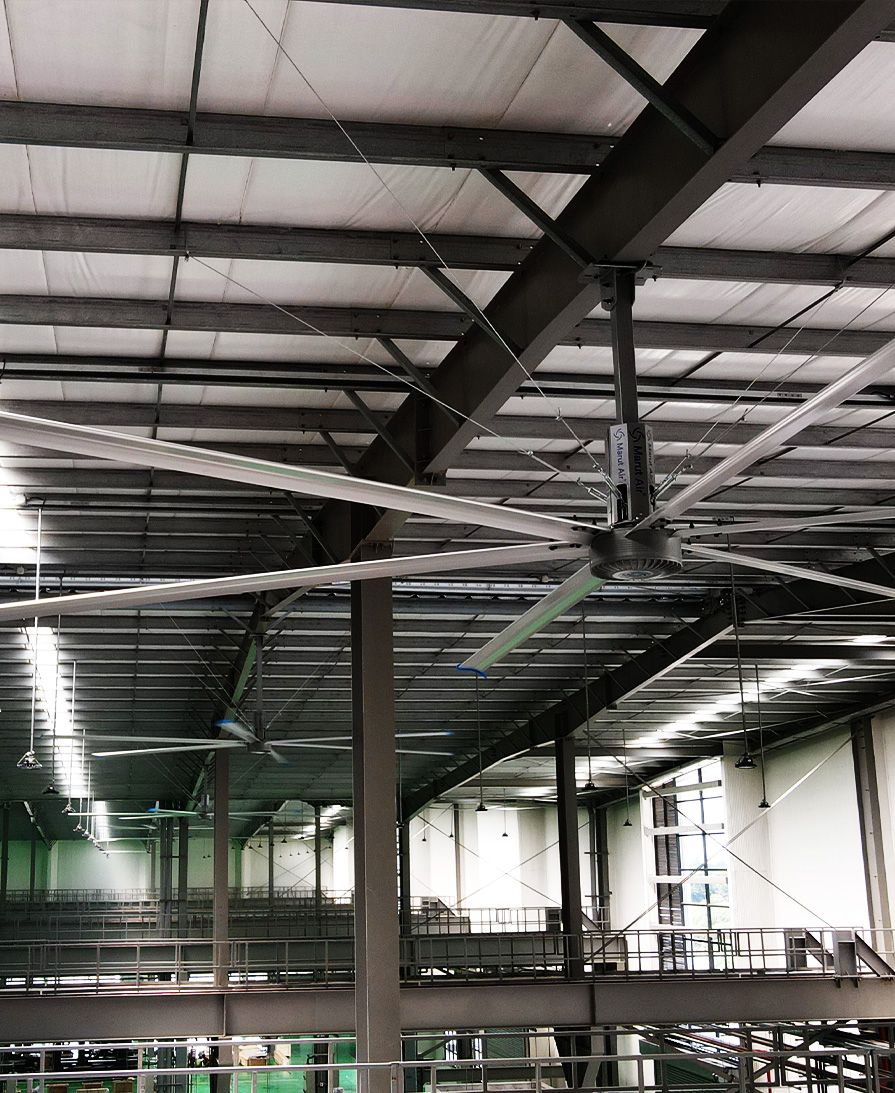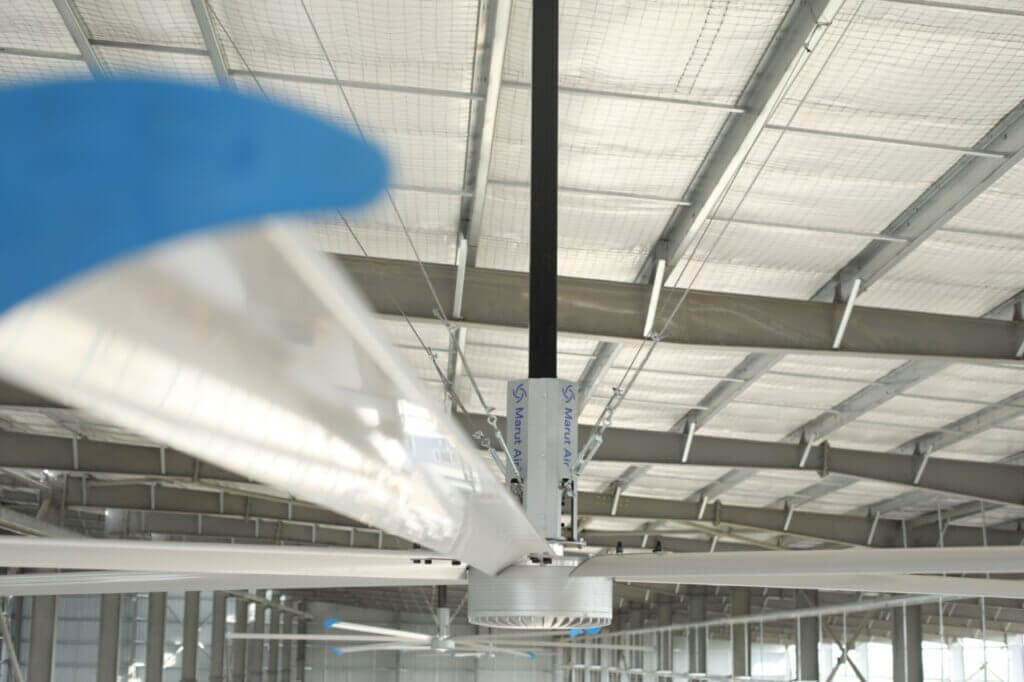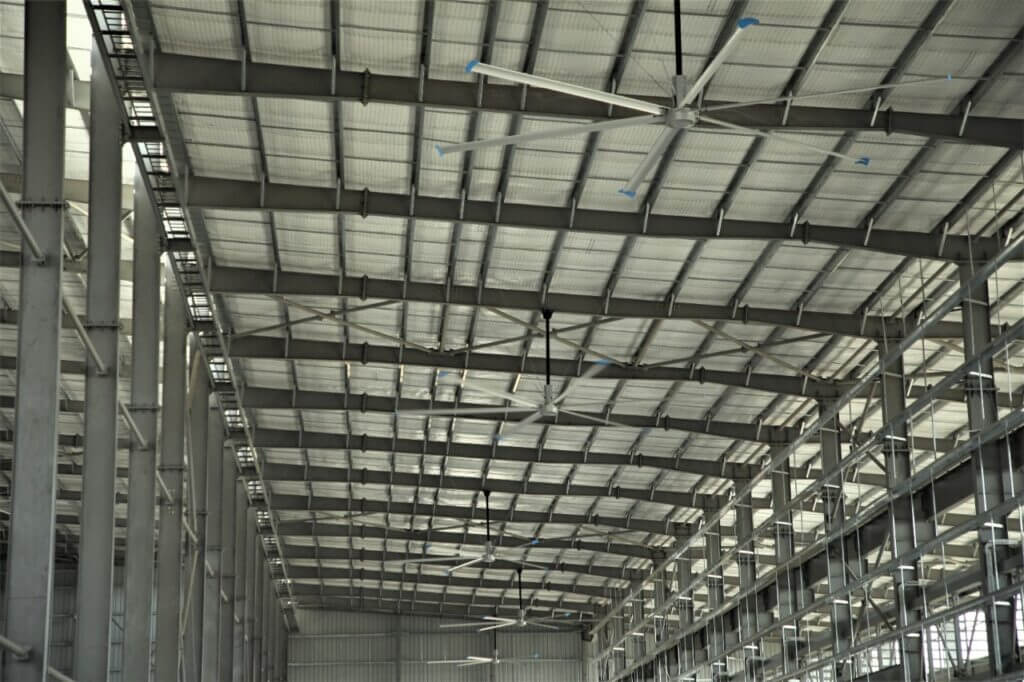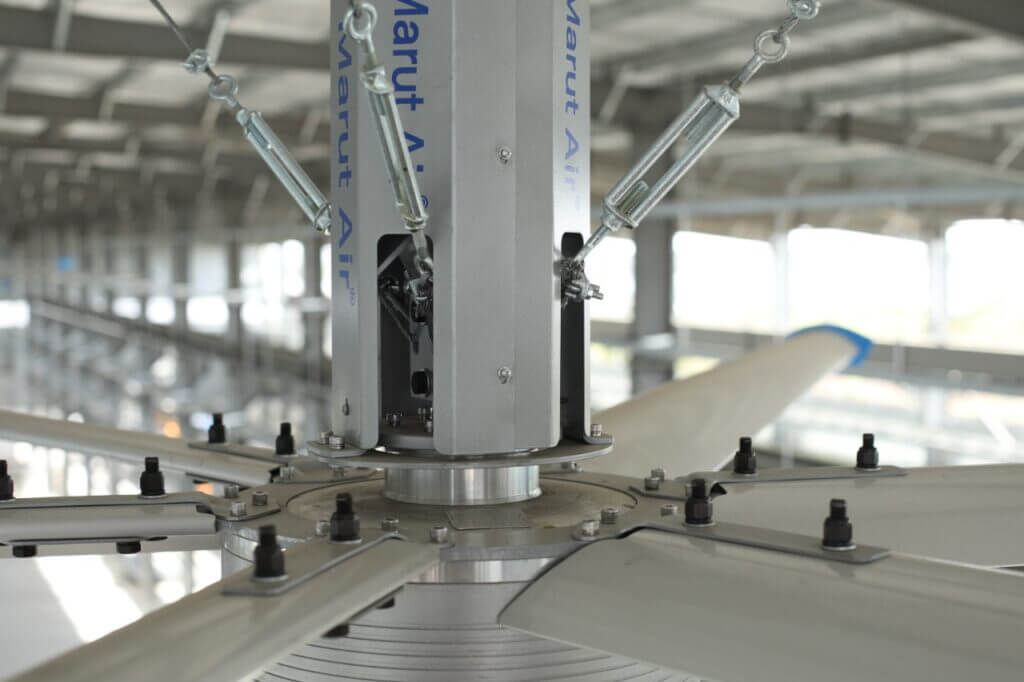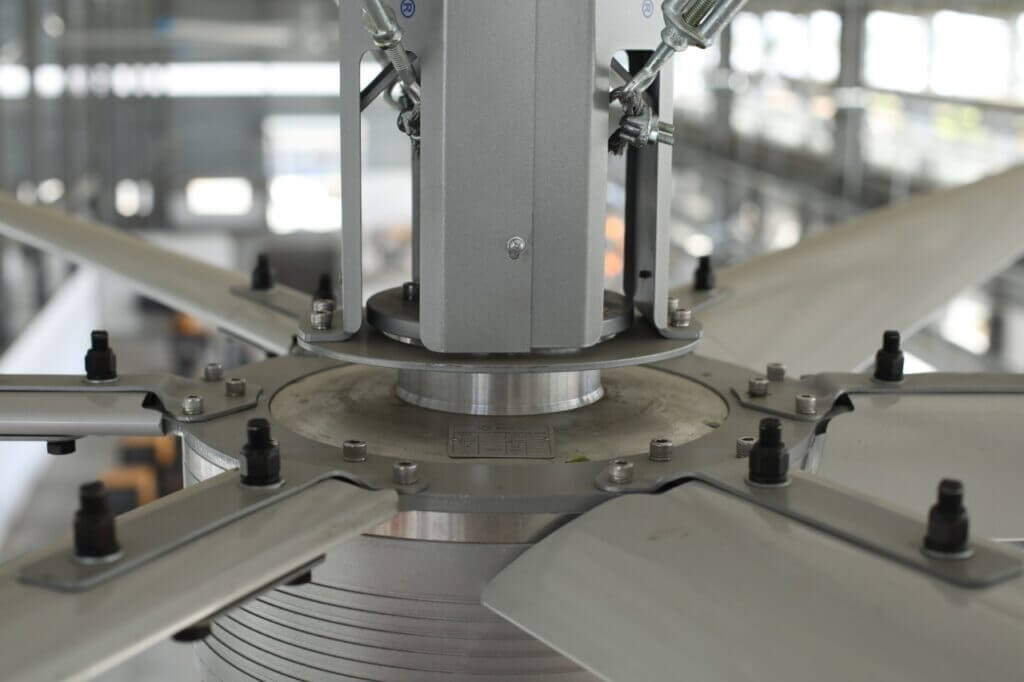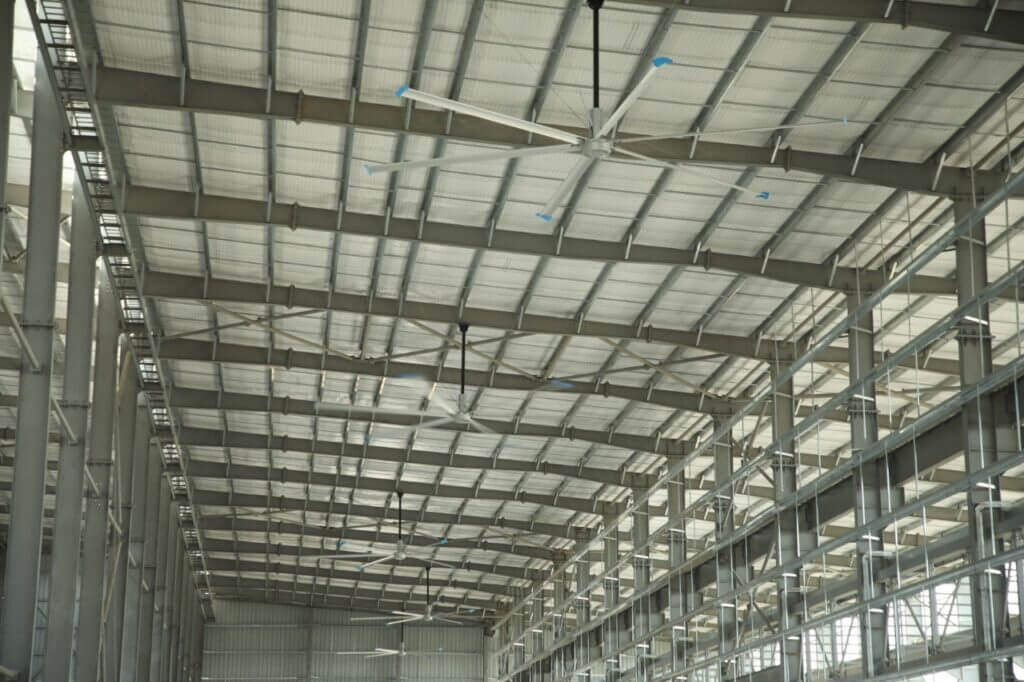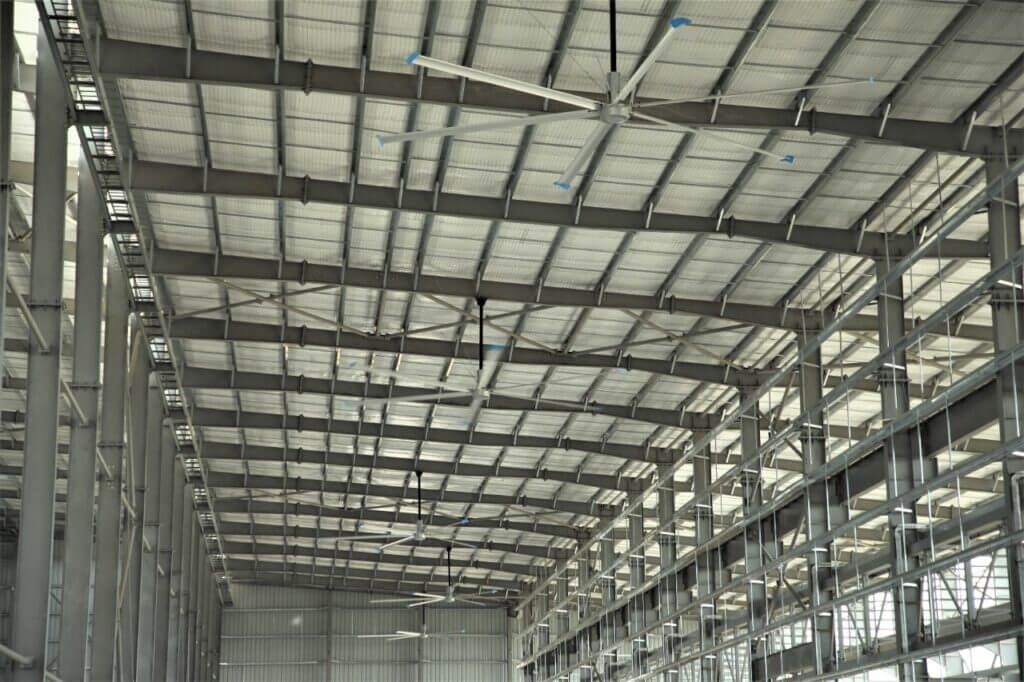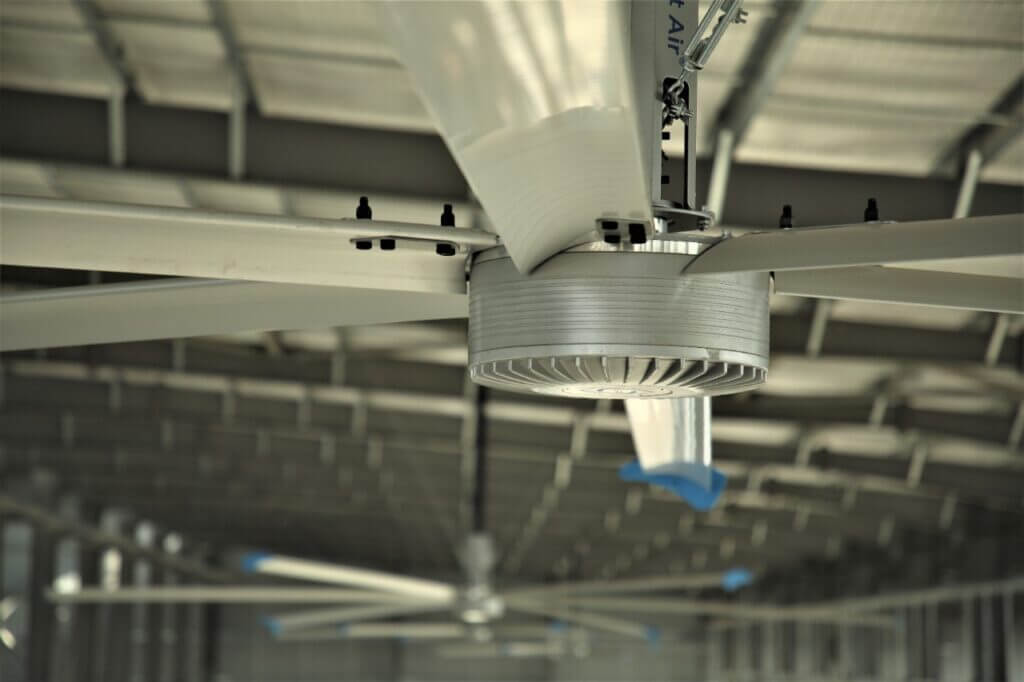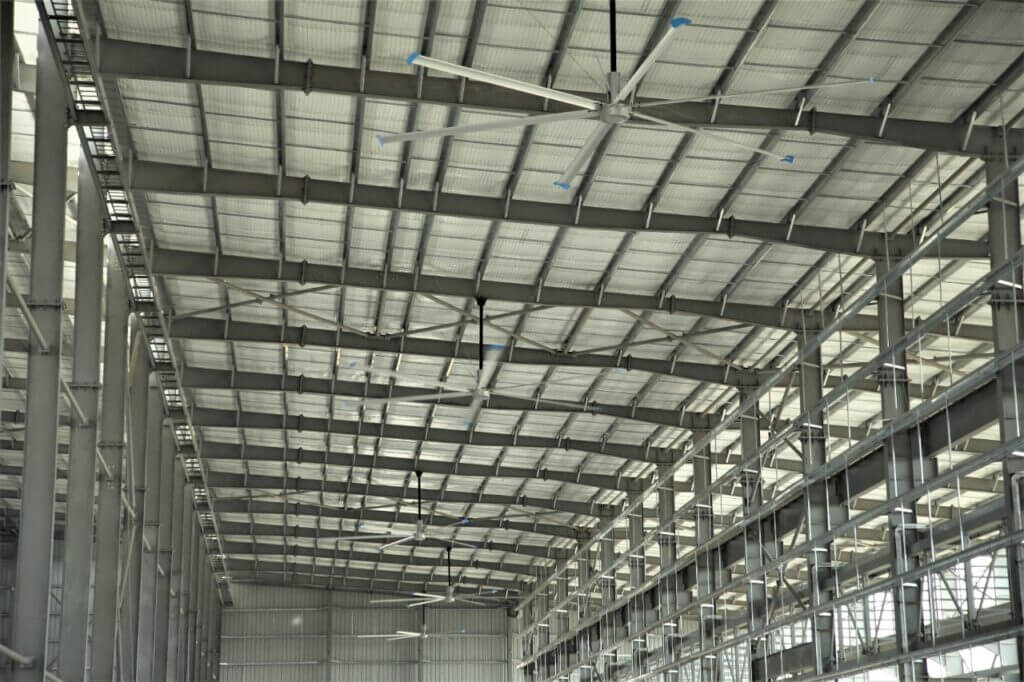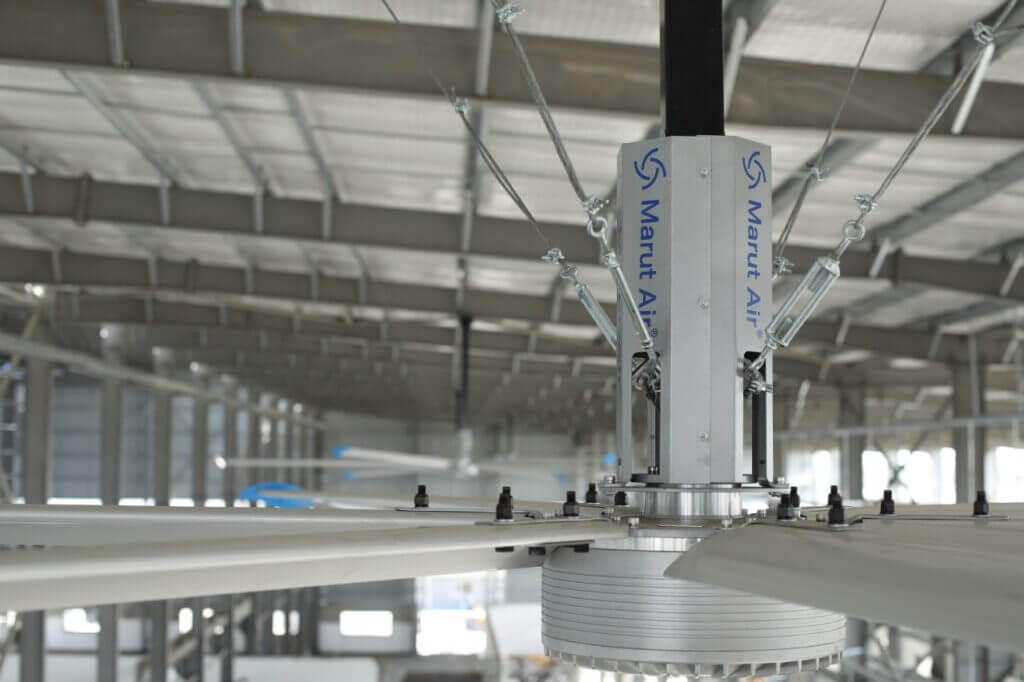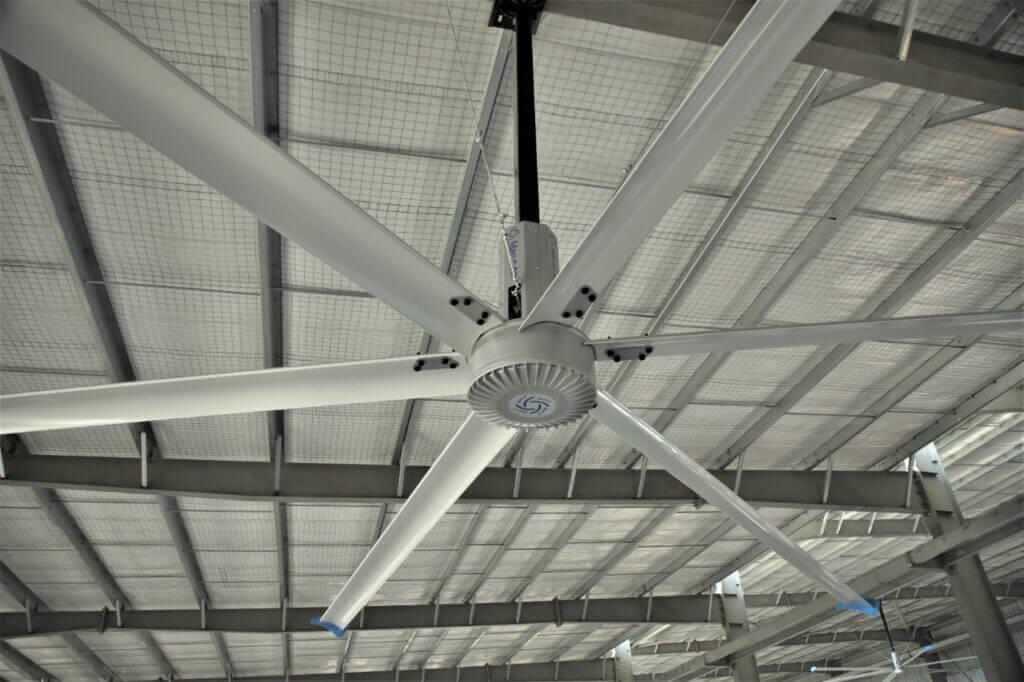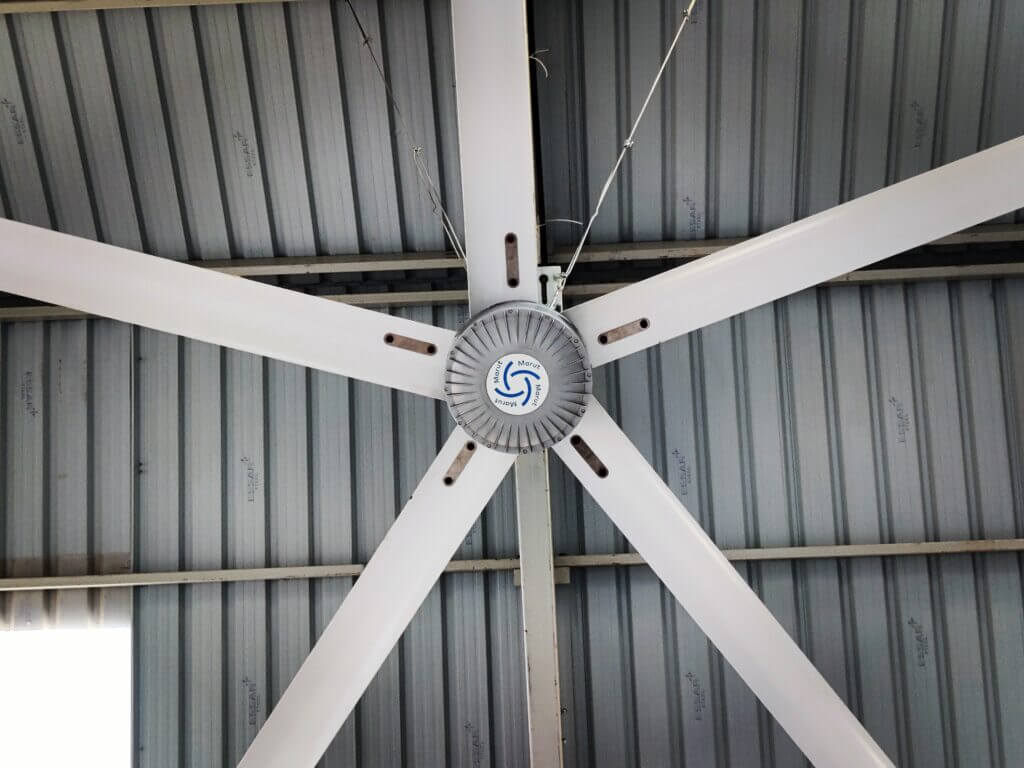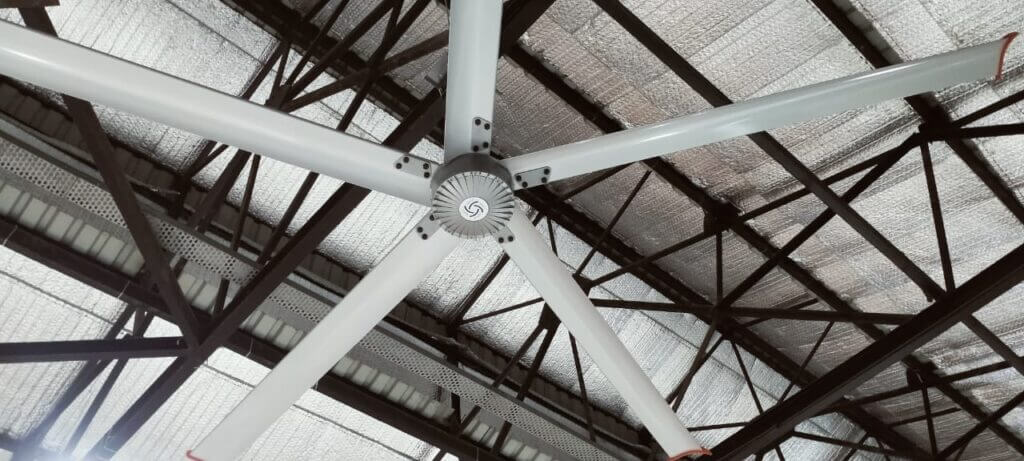HVLS Fans for Industries
HVLS fans, or high volume low speed fans, are bigger and designed to operate at a lower speed. They circulate at very low speeds and cover a larger area to maintain the temperature. They are usually used in large open areas such as industries, warehouses, airports, railway stations, gyms, and other places to maintain the air circulation and control the temperature and humidity of that area. Based on the space that needs to be ventilated in industrial applications, the HVLS fans are larger, ranging from 8 feet to 24 feet. Their blades are designed to cover a large range and circulate the airflow uniformly, even in wider areas.
Why HVLS fans are used in industries
- Enhanced Air circulation and Temperature Regulation
- Improved air quality for worker comfort
- Energy-efficient and cost-saving
Safety Benefits: Regulating the airflow to avoid severe issues like suffocation.
How do HVLS fans work?
The basic idea behind HVLS fans is that cool air separates the body’s surrounding moisture-saturated boundary layer and accelerates evaporation, producing a cooling effect. Ceiling fans produce an air column as they rotate. This air column travels outward and downward along the floor. To a lesser extent, the speed of a fan is related to the thickness of the wall of air flowing horizontally, also referred to as a horizontal floor jet. Reaching its maximum capacity, the floor jet travels outward until it comes into contact with a side wall or other vertical surface. Industrial jumbo ceiling fans cause low ground and high wind volume and are called HVLS (High Volume Low Speed). In addition to pushing dust out of the area from nooks and crannies, the device rotates 360 degrees before hitting the ground and changing direction to become a floor jet.
Why are HVLS fans used over Traditional Fans in Industries?
HVLS fans are favoured over traditional fans in industries due to their ability to circulate air and maintain the temperature and humidity throughout the area. Due to its large coverage area, it minimises the temperature difference between the floor and the ceiling. The HVLS fans rotate at a low speed, which can help lower power consumption and make it a more energy-efficient solution than traditional fans.
We have outlined some of the main advantages of HVLS fans here.
- HVLS fans provide better air circulation and lower energy consumption than standard fans.
- By reducing hotspots and cold spots, these fans maintain consistent temperatures.
- The mild breeze from HVLS fans nourishes convenience without the feeling of strong winds.
- A reduction in power usage results in lower utility costs.
Frequently Asked Questions on HVLS Fans for Industries
Question 1. What is the preferred size of HVLS Fans used in Industries?
Answer – The preferred size of HVLS fans for Industrial Applications ranges between 7 and 24 feet in diameter, based on the size of the industrial area where it needs to be installed. Generally, the fans’ blades are larger to cover a large area and circulate the air properly. The size of fans also depends on the size of the area, the ceiling height, and the airflow requirement.
Question 2. Why are traditional fans not used in large open areas like industries?
Answer – Generally, the size of the industries is huge, and it requires something that can cover a large area and regulate the air efficiently. Traditional fans are not that efficient in circulating air in large spaces. Limited air circulation may lead to high energy consumption as multiple fans must be installed to achieve the same result as HVLS fans.
Question 3. How do HVLS fans save energy?
Answer – HVLS fans smartly save energy because it is designed in such a way that they operate at low speed but circulate a large amount of air. These fans have a large diameter, and the blades are designed to create a uniform airflow even in a wider area without high speed. That means these fans do not need higher energy to operate, but they maintain the temperature and humidity efficiently throughout the area.
Question 4. How do HVLS fans affect employee productivity?
Answer – When many workers are enclosed in a space without proper ventilation, it may cause suffocation, and the employees are unable to work properly due to heat and humidity. Here, HVLS fans help to circulate a large amount of air from the enclosed space and maintain the temperature throughout the area. Proper ventilation and improved air quality help workers concentrate on their work.


